Do you have a question about the Panasonic Viera TH-42PX600A and is the answer not in the manual?
Safety Precautions for handling the TV, including warnings and cautions.
Important notes and reminders for proper usage and maintenance.
Guidance on cleaning and maintaining the TV's display panel and cabinet.
Lists standard and optional accessories included with or available for the TV.
Identifies and explains the function of buttons on the remote control and TV.
Instructions for connecting external devices to the TV.
Steps to automatically search and store TV channels.
Covers fundamental operations like watching TV, using the TV guide, and viewing videos.
Explores advanced TV functions such as menu settings, DVB features, and PC connectivity.
Includes technical information, common questions, and licensing details.
Warnings regarding mains plug, lead, internal components, and liquids.
Precautions on placement, foreign objects, sunlight, and stable mounting.
Safety measures for cleaning, long-term storage, and ventilation.
Advice on keeping the TV away from interfering electronic equipment.
Instructions for cleaning the TV's display panel using a soft cloth.
Guidance on cleaning the TV's cabinet surface with a soft cloth.
Reminder to wipe the mains plug with a dry cloth regularly.
Lists standard accessories included with the TV, such as remote control and batteries.
Lists optional accessories available for the TV, like pedestals and wall brackets.
Details the buttons and functions of the remote control transmitter.
Identifies and explains the buttons and indicators on the TV's front panel.
Diagram illustrating how to connect various external devices to the TV's rear terminals.
Guidance on connecting TV aerials and cables for optimal reception.
Steps for turning on the TV, selecting state, and starting the auto-tuning process.
Instructions for inputting the owner's identification number during setup.
Procedure for turning the TV on using the power button.
How to choose between DVB digital and Analogue broadcast signals.
Methods for selecting TV channels using service numbers or information banners.
Instructions for selecting TV services via the DVB TV Guide.
Features for freezing pictures, displaying information, and changing aspect ratio.
Options for displaying subtitles and viewing content in multiple windows.
How to select the Digital Video Broadcasting (DVB) mode for the TV Guide.
Navigating and viewing the electronic programme guide for current and future broadcasts.
Options for selecting specific programmes, viewing details, and navigating days.
Methods for viewing programme lists by type or favourites, and managing favourite services.
Procedure for selecting the correct input source for connected video devices.
Using the TV's remote to control connected Panasonic VCR or DVD equipment.
Instructions for activating and navigating the teletext service.
Methods for selecting teletext pages using page numbers or colour buttons.
Features for revealing hidden data, storing pages, viewing sub pages, and multitasking.
Steps to display, select, and adjust settings within the TV's menus.
Options for adjusting viewing mode, colour, contrast, brightness, and picture noise.
Adjustments for volume, bass, treble, balance, and SRS TruSurround XT.
Configuration settings for HDMI, Teletext, timers, power, tuning, and system resets.
Steps to create and manage favourite service lists for DVB channels.
Settings for banner display timeout, audio preference, and audio output.
Instructions for updating the TV's system software automatically or manually.
Procedures for automatically or manually tuning DVB channels and adding new services.
Options for signal display, notification messages, region selection, and daylight saving.
Tools for editing, adding, moving, locking, and skipping analogue channels.
Steps for automatic tuning, manual tuning, and adjusting volume for individual channels.
Procedure for entering a 4-digit PIN for security and owner information.
Instructions for inputting name, address, and zip code for owner identification.
Steps to connect a PC and select the PC input source on the TV.
Adjusting PC display settings like resolution, clock, and position for optimal viewing.
Steps for inserting an SD card and selecting the viewing mode (MPEG4 or Photo).
How to watch videos and photos, delete, lock files, and change viewing settings.
Procedure for initiating and cancelling programme recording onto an SD card.
Options for setting recording time, mode, and formatting the SD card.
How to confirm the remaining recording time available on the SD card.
Setting up and using the HDAVI Control function for Panasonic equipment.
Diagrams illustrating home theatre and speaker connections via HDMI.
Illustrations showing how to connect various devices like DVD recorders, amplifiers, and PCs.
Table detailing compatible equipment for each TV connector type.
Procedure to reset all TV settings to factory defaults.
Steps to select state and perform auto tuning after restoring settings.
Guide to selecting appropriate aspect ratios for various signal types.
Instructions for updating the TV's software automatically or manually.
Explanation of DVB rating meanings for parental guidance.
Information on displaying multiple video sources simultaneously on the screen.
Guide to connecting devices via HDMI for high-definition digital images and sound.
Information on connecting a PC, supported resolutions, and signal types.
Options for selecting sound modes for analogue broadcasts.
Table listing input signals supported by the TV for Component, HDMI, and PC.
Details on supported photo, video, and data formats for SD card browsing.
Information on how folders and files are structured when viewed on a PC.
Troubleshooting common screen problems like logos, contrast, white spots, and noisy images.
Solutions for audio problems, missing sound, and persistent channel numbers.
Recommendations for aerial connections to ensure optimal DVB signal reception.
Solutions for issues with DVB channel tuning and picture break-up.
Addressing unusual picture or sound issues when connecting via HDMI.
Resolving issues when the SD card cannot be used even after formatting.
Explains on-screen messages related to SD card insertion, locking, and format.
Important warnings and precautions for safely handling and using SD cards.
Lists trademarks and registered trademarks used in the manual.
Details power source, consumption, dimensions, weight, and display specifications.
Information on input/output terminals, PC signals, and receiving systems.
Safety Precautions for handling the TV, including warnings and cautions.
Important notes and reminders for proper usage and maintenance.
Guidance on cleaning and maintaining the TV's display panel and cabinet.
Lists standard and optional accessories included with or available for the TV.
Identifies and explains the function of buttons on the remote control and TV.
Instructions for connecting external devices to the TV.
Steps to automatically search and store TV channels.
Covers fundamental operations like watching TV, using the TV guide, and viewing videos.
Explores advanced TV functions such as menu settings, DVB features, and PC connectivity.
Includes technical information, common questions, and licensing details.
Warnings regarding mains plug, lead, internal components, and liquids.
Precautions on placement, foreign objects, sunlight, and stable mounting.
Safety measures for cleaning, long-term storage, and ventilation.
Advice on keeping the TV away from interfering electronic equipment.
Instructions for cleaning the TV's display panel using a soft cloth.
Guidance on cleaning the TV's cabinet surface with a soft cloth.
Reminder to wipe the mains plug with a dry cloth regularly.
Lists standard accessories included with the TV, such as remote control and batteries.
Lists optional accessories available for the TV, like pedestals and wall brackets.
Details the buttons and functions of the remote control transmitter.
Identifies and explains the buttons and indicators on the TV's front panel.
Diagram illustrating how to connect various external devices to the TV's rear terminals.
Guidance on connecting TV aerials and cables for optimal reception.
Steps for turning on the TV, selecting state, and starting the auto-tuning process.
Instructions for inputting the owner's identification number during setup.
Procedure for turning the TV on using the power button.
How to choose between DVB digital and Analogue broadcast signals.
Methods for selecting TV channels using service numbers or information banners.
Instructions for selecting TV services via the DVB TV Guide.
Features for freezing pictures, displaying information, and changing aspect ratio.
Options for displaying subtitles and viewing content in multiple windows.
How to select the Digital Video Broadcasting (DVB) mode for the TV Guide.
Navigating and viewing the electronic programme guide for current and future broadcasts.
Options for selecting specific programmes, viewing details, and navigating days.
Methods for viewing programme lists by type or favourites, and managing favourite services.
Procedure for selecting the correct input source for connected video devices.
Using the TV's remote to control connected Panasonic VCR or DVD equipment.
Instructions for activating and navigating the teletext service.
Methods for selecting teletext pages using page numbers or colour buttons.
Features for revealing hidden data, storing pages, viewing sub pages, and multitasking.
Steps to display, select, and adjust settings within the TV's menus.
Options for adjusting viewing mode, colour, contrast, brightness, and picture noise.
Adjustments for volume, bass, treble, balance, and SRS TruSurround XT.
Configuration settings for HDMI, Teletext, timers, power, tuning, and system resets.
Steps to create and manage favourite service lists for DVB channels.
Settings for banner display timeout, audio preference, and audio output.
Instructions for updating the TV's system software automatically or manually.
Procedures for automatically or manually tuning DVB channels and adding new services.
Options for signal display, notification messages, region selection, and daylight saving.
Tools for editing, adding, moving, locking, and skipping analogue channels.
Steps for automatic tuning, manual tuning, and adjusting volume for individual channels.
Procedure for entering a 4-digit PIN for security and owner information.
Instructions for inputting name, address, and zip code for owner identification.
Steps to connect a PC and select the PC input source on the TV.
Adjusting PC display settings like resolution, clock, and position for optimal viewing.
Steps for inserting an SD card and selecting the viewing mode (MPEG4 or Photo).
How to watch videos and photos, delete, lock files, and change viewing settings.
Procedure for initiating and cancelling programme recording onto an SD card.
Options for setting recording time, mode, and formatting the SD card.
How to confirm the remaining recording time available on the SD card.
Setting up and using the HDAVI Control function for Panasonic equipment.
Diagrams illustrating home theatre and speaker connections via HDMI.
Illustrations showing how to connect various devices like DVD recorders, amplifiers, and PCs.
Table detailing compatible equipment for each TV connector type.
Procedure to reset all TV settings to factory defaults.
Steps to select state and perform auto tuning after restoring settings.
Guide to selecting appropriate aspect ratios for various signal types.
Instructions for updating the TV's software automatically or manually.
Explanation of DVB rating meanings for parental guidance.
Information on displaying multiple video sources simultaneously on the screen.
Guide to connecting devices via HDMI for high-definition digital images and sound.
Information on connecting a PC, supported resolutions, and signal types.
Options for selecting sound modes for analogue broadcasts.
Table listing input signals supported by the TV for Component, HDMI, and PC.
Details on supported photo, video, and data formats for SD card browsing.
Information on how folders and files are structured when viewed on a PC.
Troubleshooting common screen problems like logos, contrast, white spots, and noisy images.
Solutions for audio problems, missing sound, and persistent channel numbers.
Recommendations for aerial connections to ensure optimal DVB signal reception.
Solutions for issues with DVB channel tuning and picture break-up.
Addressing unusual picture or sound issues when connecting via HDMI.
Resolving issues when the SD card cannot be used even after formatting.
Explains on-screen messages related to SD card insertion, locking, and format.
Important warnings and precautions for safely handling and using SD cards.
Lists trademarks and registered trademarks used in the manual.
Details power source, consumption, dimensions, weight, and display specifications.
Information on input/output terminals, PC signals, and receiving systems.
| Screen Size | 42 inches |
|---|---|
| Display Type | Plasma |
| Resolution | 1024 x 768 |
| Contrast Ratio | 10000:1 |
| Response Time | 0.001 ms |
| HDMI Ports | 2 |
| Component Video Inputs | 2 |
| S-Video Input | 1 |
| Composite Input | 1 |
| PC Input | 1 |
| Built-in Tuner | Yes |
| Aspect Ratio | 16:9 |
| Speakers | 2 x 10W |
| Viewing Angle | 160 degrees |

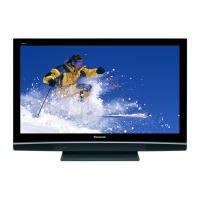
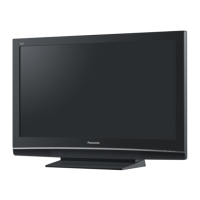

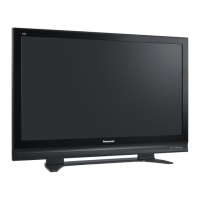
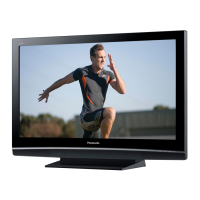


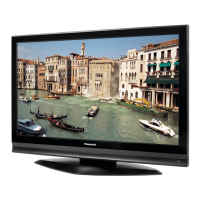



